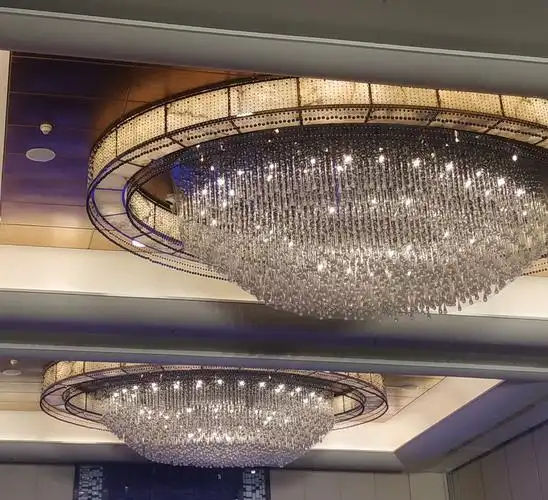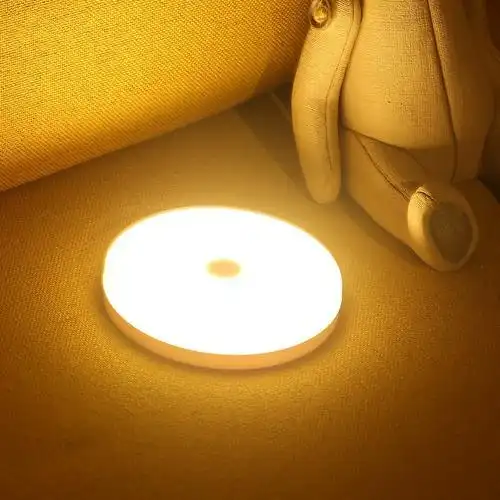Last week, a friend took down the gorgeous crystal chandelier in their living room. Upon measurement, they discovered that each bulb drew a whopping 50W, and with all six lit simultaneously, the power consumption reached 300W, roughly equivalent to half an air conditioner. Even more ridiculous, even though the crystal pendant fragmented the light, the floor remained dim, forcing them to use a floor lamp for additional light—a significant increase in their electricity bill. It's true that while crystal chandeliers are beautiful, the electricity costs can be staggering.
01
1. Energy Saving Methods
> Problems with Old Crystal Chandeliers
Old crystal lamps often use halogen cups, which generate a significant amount of heat. In the summer, sitting under the lamp feels like being under a miniature sun. These halogen cups consume a lot of energy and require frequent cleaning to accumulate dust. Nowadays, many brands have upgraded their crystal lamps to LED modules, significantly reducing power consumption by one-fifth at the same brightness. They also support smart dimming on mobile phones, allowing users to adjust the brightness to a warm yellow 10% before bedtime to save on electricity bills. If you're still using an older crystal chandelier at home, consider purchasing a G9 LED replacement bulb on Taobao for just a few dozen yuan. It's easy to replace, takes only ten minutes, and the annual electricity savings are enough to buy a hot pot meal. Furthermore, the upward-facing bulb in an upturned lamp means the light first hits the ceiling and then diffuses downward, resulting in at least 30% loss. Even more regrettable, dust accumulation inside the lampshade further reduces light efficiency.

> Advantages of LED Lamps
If retrofitting seems too cumbersome, consider replacing it with an LED upturned lamp with a radar sensor. This design offers intelligent energy-saving features, dimming the light when no one is around. The new generation of LED crystal lamps supports intelligent dimming, significantly reducing energy consumption. Furthermore, while frosted glass lampshades offer a certain degree of comfort, the soft light effect is significantly reduced in brightness. High-transparency acrylic lampshades are now more popular. Their micro-ribbed surface provides a soft light effect without compromising light transmittance, and they're easy to remove and clean, making them very practical.
> Lampshade and Replacement Recommendations
Choose a magnetic lampshade for quick replacement with a simple pull and snap, making it even easier than changing a phone case.

02
2. Choosing and Using Light Strips
> Disadvantages of High-Voltage Light Strips
High-voltage light strips were once recommended by decorators due to their affordability. However, 220V high-voltage light strips have a serious heat problem, with the PVC outer covering turning yellow and brittle in just two years. High-voltage light strips are prone to heat damage and offer poor safety.
> Advantages of Low-Voltage Light Strips
Today, 12V low-voltage light strips are a more common choice. They generate less heat, even for children, and can be cut to any length. Low-voltage light strips generate less heat, offering improved safety and durability.
> Mood Light Strips
For creating a mood, RGB light strips with a microphone are recommended. When music plays, the lights pulsate, creating a cheerful atmosphere, while the electricity bill is only about one-third that of traditional high-voltage light strips. RGB light strips with a microphone can create a musical atmosphere while being economical and energy-efficient.

> Lighting Needs and Electricity Savings
Calculations show that if all home lighting fixtures were replaced with lower-wattage options—for example, reducing the power from 1200W to 200W, and using them for five hours per day—you could save over 1,000 yuan in electricity bills annually. Properly zoning lighting can significantly reduce electricity costs. This savings could be enough to buy a new phone for my parents.
Choosing the right lighting system is also crucial. Brighter lighting isn't always better; instead, you should zone your lighting based on your needs. For example, you could use a 5W reading light by the sofa, a 15W pendant lamp by the dining table, and a 3W nightlight in the hallway. By using appropriate zoning, we can meet our lighting needs while effectively reducing electricity bills.

